Summary
Nestled in the southwestern corner of India lies the enchanting state of Kerala, a land renowned for its natural beauty, cultural richness, and vibrant festivals – often referred to as God’s own land. One such celebration that captivates the hearts of people of Kerala and visitors alike is Onam, a ten-day harvest festival that brings together tales of kings, Gods, cultural traditions, and a sumptuous feast that reflects the essence of Kerala’s spirit.
About Kerala
Kerala is a state in the southwest of India. It is located on the Malabar coast, which is bordered by the Arabian Sea to the west, Karnataka to the north and northeast, and Tamil Nadu to the east. The capital of Kerala is Thiruvananthapuram.
Kerala is known for its ecotourism initiatives, beautiful backwaters, and unique culture and traditions. It is also known as “God’s own Country”.
Kerala is a small state, making up only about 1 percent of India’s total area. It has a population of 30 million and a surface area of 38,900 km2. The majority language is Malayalam.
King Mahabali and Lord Vamana
At the heart of Onam lies the legend of King Mahabali and Lord Vamana (an avatar of Lord Vishnu). Mahabali, known for his just rule and devotion, attracted the attention of Lord Vishnu, who took the form of Vamana, a learned man but who is of a very small stature. Seeking alms, Vamana asked for three paces of land from the generous King Bali . The King grants his request. Vamana then grows to a giant and with his first two strides, he covered the earth and heavens. As there was no place for the third step, Mahabali offered his head and Vamana places his foot and pushes the king to the nether worlds. Impressed by his selflessness, Vamana granted him a boon to visit his kingdom once a year, a celebration that came to be known as Onam.
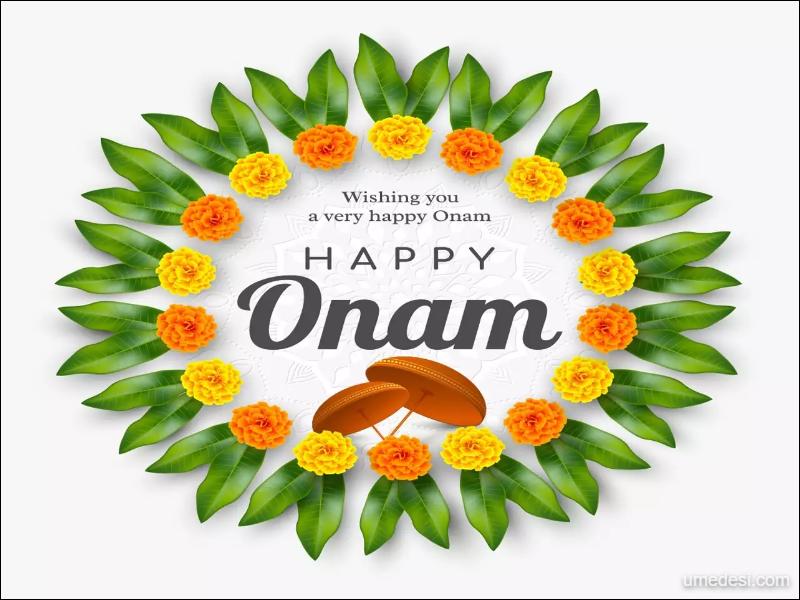
Ten Days of Onam
Onam spans ten days, each marked by unique rituals and festivities:
Onam: A Festival of 10 Days
Onam, the vibrant harvest festival of Kerala, unfolds over ten days, each brimming with its unique traditions, rituals, and cultural significance.
Day 1 – Atham
The festival commences with Atham, marked by the creation of a simple floral arrangement, “Pookkalam,” at the entrance of homes. It symbolizes the start of the festivities and encourages creativity and community engagement. This is a day of preparation. People clean their homes and decorate them with flowers. They also buy new clothes and food for the festival. This marks King Mahabali’s preparations to journey from Heaven to his earthly kingdom.
Day 2 – Chithira
Chithira signifies the essence of unity and the spirit of togetherness. The creation of Onam Pookkalam, a floral carpet, symbolizes this day’s festivities.Homes come alive with color as people contribute to the floral patterns. Pookkalam are made by women and children, and they are placed in front of homes and temples.
Day 3 – Chodhi
Another layer of flowers is added to the carpet, employing an assortment of four to five flower types. Families prepare for the days ahead by engaging in collective activities. This is a day of fasting and prayer. People pray for the well-being of their families and friends.
Day 4 – Vishakam
Vishakam sees the Pookkalam taking a more intricate form. The day holds a special significance as it marks the start of many cultural performances and events that continue throughout Onam. This is a day of celebration. People feast on traditional Onam dishes and enjoy cultural performances. This day launches various tournaments as part of the celebration.
Day 5 – Anizham
On Anizham, the Pookkalam continues to flourish with more complex designs. The festivities gain momentum, and various art forms like traditional dances and music performances grace the stages. On this day, people visit temples and offer prayers. Preparations for the grand boat race take place on this fifth day.
Day 6 – Thriketa
Thriketa witnesses a heightened enthusiasm as the Pookkalam becomes even more intricate and captivating. It’s a day of joy and excitement, as the community comes together to celebrate their shared cultural heritage. Festive celebrations are ignited on this day.
Day 7 – Moolam
As Moolam dawns, the Pookkalam reaches its zenith, showcasing the mastery of floral artistry. Traditional rituals and prayers are performed, reflecting the spiritual essence of Onam. Temples come alive with special pujas and rituals.
Day 8 – Pooradam
On Pooradam or Pooram, the excitement builds as families prepare for the upcoming boat races, “Vallamkali.” The highlight of the day is a grand procession of elephants and dancers. Idols of Vamana and King Mahabali are raised in homes to commemorate this day.
Day 9 – Uthradom
Uthradom, the penultimate day, is marked by intense preparations for the grand feast, “Onam Sadya.” Homes are cleaned, and ingredients are gathered for the culinary extravaganza. Mahabali’s symbolic entry into Kerala is observed. This is a day of homecoming. People believe that King Mahabali returns to Kerala on this day. They welcome him with a feast and prayers.
Day 10 – Thiru Onam
The pinnacle of Onam arrives with Thiru Onam or Thiruvonam. Homes are adorned with grand Pookkalams, and families don traditional attire. The day commences with rituals and prayers, followed by the grand Onam Sadya feast, where families and communities gather to savor the diverse flavors of Kerala’s cuisine. Cultural performances, games, and festivities mark the day, reminding everyone of the cultural unity and harmony that Onam symbolizes. The pinnacle of the celebration, this day sees the warm and reverential welcome of King Mahabali by the people of Kerala.
Onam Traditions
Pookkalam
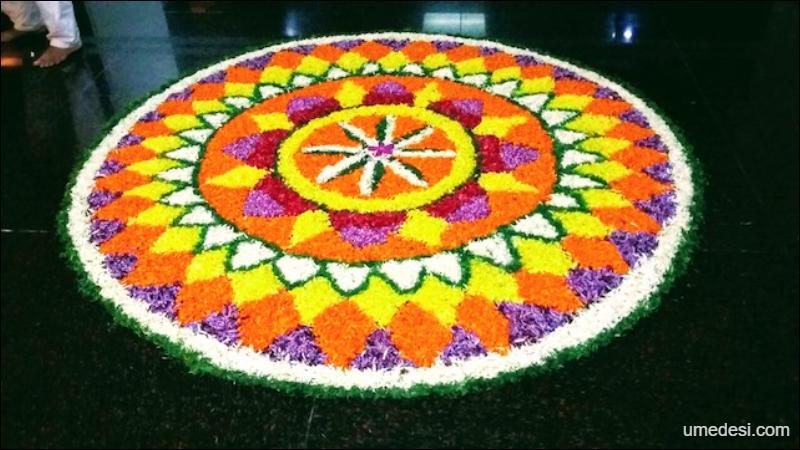
This is a floral carpet made of fresh flowers arranged in intricate patterns on the floor. People start making pookkalam from Atham onwards, and add a new layer every day until Thiruvonam. The pookkalam symbolizes the welcome to King Mahabali and also showcases the artistic talent of the people.
Vallamkali
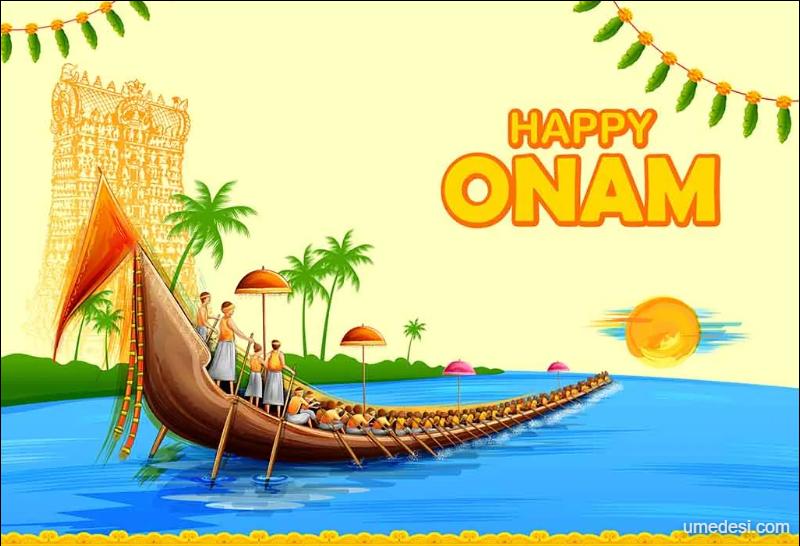
On the Pampa River, traditional boat races called “Vallamkali” are held, reflecting Kerala’s maritime heritage and unity. This boat race takes place on the backwaters of Kerala. The boats are long and narrow, and can accommodate up to 100 rowers.

The rowers wear white mundu (a traditional garment) and colorful turbans, and sing songs to synchronize their movements. The boat race is a spectacle of speed, skill, and teamwork.
Onakalikal
Traditional games such as tug-of-war, archery, and martial arts competitions engage participants and spectators.
Kayyikali is one of the famous sport – where the opponents use fists. This is quite brutal but popular. Usually has two teams. Read more here.
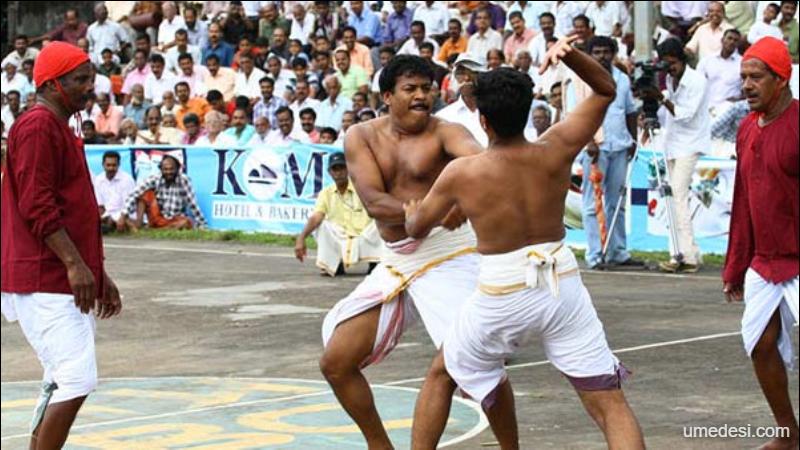
Sadya
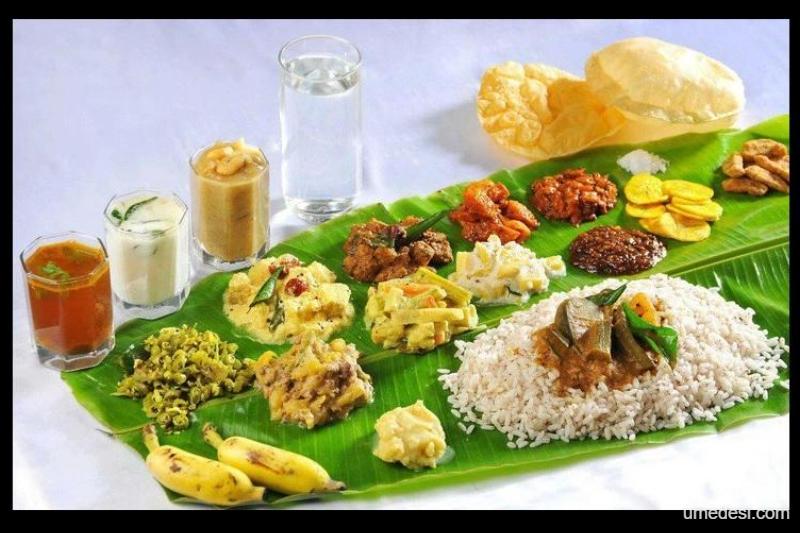
This is a grand feast served on a banana leaf, consisting of various vegetarian dishes – including “Avial” (mixed vegetable stew), “Sambhar” (lentil stew with seasonal vegetables and spices), “Parippu” (lentil dish), rice, pickles, papadum, and payasam (a sweet dessert). Sadya is usually eaten with hands, and is considered a highlight of Onam. People invite their friends and relatives for sadya, and enjoy the food and company. The harmonious blend of flavors mirrors Kerala’s multicultural landscape.
Thiruvathirakali
This is a dance performed by women, dressed in white sarees with golden borders. They form a circle around a lamp or a floral decoration, and sway gracefully to the rhythm of a song. The dance is dedicated to Lord Shiva and his consort Parvati, and expresses the love and devotion of women towards their husbands.
PuliKali
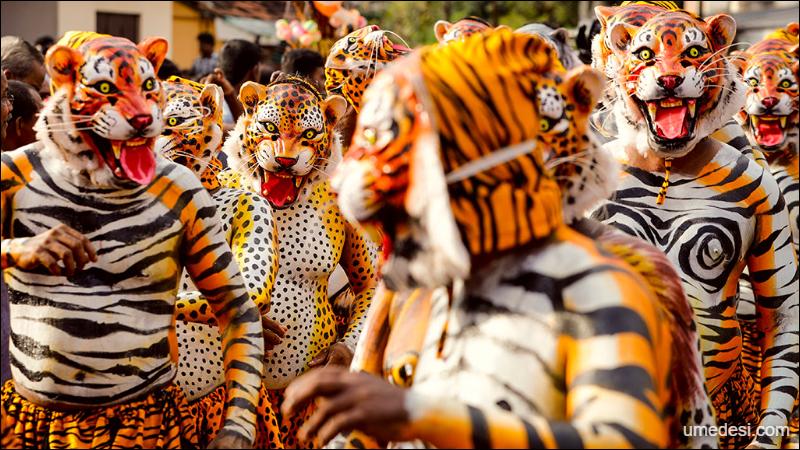
This is a folk art that involves men painting their bodies as tigers and leopards, and dancing to the beats of drums. The performers wear masks and costumes, and mimic the movements of wild animals. The pulikali is a fun and colorful way to entertain the crowds.
Onathappan
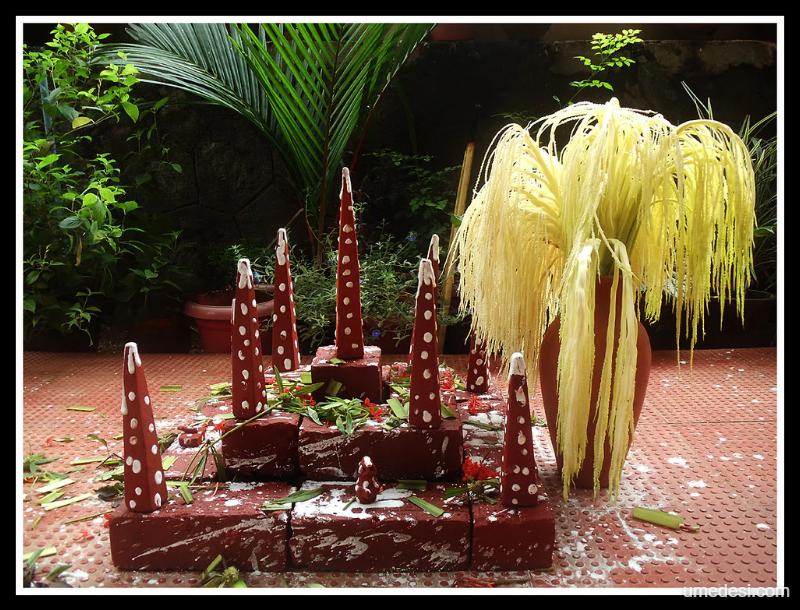
This is a clay pyramid that represents King Mahabali or Lord Vishnu. It is placed in the center of the pookalam, and worshipped with flowers, fruits, and incense. On Thiruvonam day, the onathappan is immersed in water, as a farewell to King Mahabali.
Onam’s Cultural Significance
Onam symbolizes the spirit of unity and togetherness, across all classes of society. The festival underscores Kerala’s agrarian roots, where the harvest is celebrated as a community effort. People from all walks of life come together to partake in the festivities, reinforcing the essence of “Vasudhaiva Kutumbakam” the world as one family.
Onam Beyond Kerala
As the Indian diaspora spreads across the world, so does the spirit of Onam. Indians of Kerala origin living outside the state organize celebrations that bring a taste of Kerala’s traditions and flavors to distant shores.
Onam, with its legends, intricate floral carpets, boat races, and grand feasts, offers a window into Kerala’s cultural ethos. It encapsulates the colorful tapestry of this enchanting land and serves as a testament to unity, harmony, and the enduring ties that bind its people.
Top Image Source
